From Singapore to Borneo – our Expedition begins
After a very long absence of nearly six months, we were once again returning to The World. We boarded the ship in Singapore where we would embark on the upcoming Borneo Expedition.
From Singapore, we sailed two days to a port called Kota Kinabalu on the northwestern corner of the large island of Borneo. We learned from one of the lectures that there are actually three countries on this third largest island in the world: Malaysian Borneo, Indonesian Borneo, and the Sultanate of Brunei.
The first stop on our Expedition was Sandakan, the second largest city in Malaysian Borneo. Because so much of the scenery and animals are away from the coast, three “overlands” have been planned for the Expedition. We decided to take the Sandakan Heritage tour.
Sandakan has a population of about 500,000, half of whom are Chinese. This explained our first visit to the Puu Jih Shih Temple in the hills above the town. Besides the grandeur of the gold Buddhas, the overview of the city was very nice.
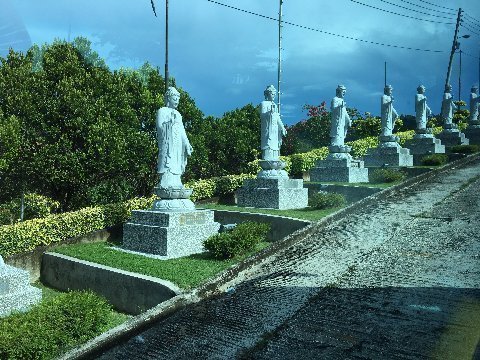 Buddhas lining the entrance drive
Buddhas lining the entrance drive

This temple is heavily endowed by very wealthy people who contribute to the elaborate altars and statues. What look to be tall columns of “candles” are actually small electric lights with names of ancestors for whom the people pray. A little like lighting real candles in churches all over the world.
 Banks of “candles” flanking the statues
Banks of “candles” flanking the statues
 . . . and a close-up
. . . and a close-up
 One of the temple bells we were asked not to ring
One of the temple bells we were asked not to ring
Our next stop was a bit more sobering. It was the Sandakan Memorial Park, the site of a POW camp during World War II. In 1942, to protect the oil fields they had captured in Borneo, the Japanese imported about 1500 prisoners of war (mostly Australians who had been captured at the fall of Singapore) to build an airfield. The conditions in the camp were appalling and the prisoners were expected to build the airfield pretty much by hand. Many died of starvation or as the result of torture.
All that is now left in the former camp are the rusting hulls of a boiler, bulldozer and part of a generator. There is a very nice center that houses memorials to the prisoners and some firsthand accounts of the horrors by the few survivors.
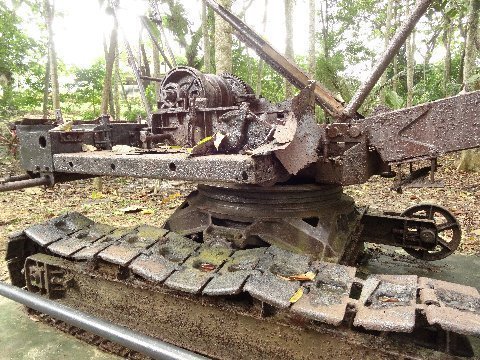
Following this visit we headed back towards town and Buli Sim Sim which is one of the water villages where people have lived for many years. It has the advantage of no land taxes and the houses can be easily expanded. Our guide, Faisal, lives in one with his parents and grandfather. The main disadvantage we saw was the accumulated garbage that appears during low tide. I guess the “high rent” district lies farther out the concrete walkways where the stilted homes are always awash.

The children, as usual, were adorable and all wanted to say “hello”
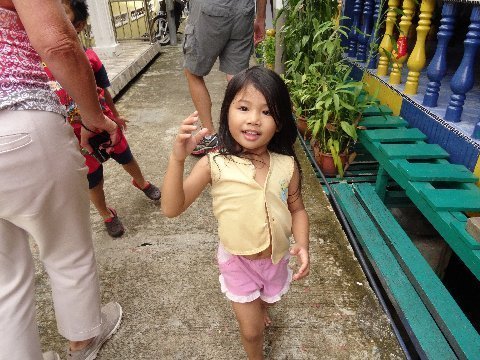
One lady even invited us in to see her house. It was very well furnished and modern. Many of them have front porches and it has a real neighborhood feel.

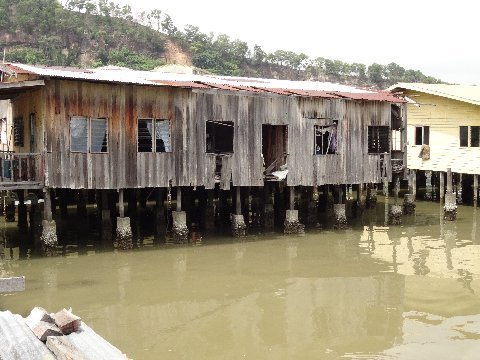 One of the many “fixer-uppers”
One of the many “fixer-uppers”
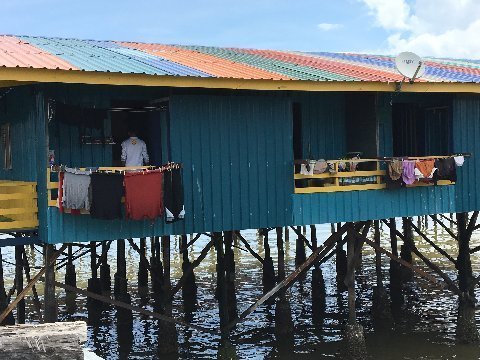 And everyone has a satellite dish
And everyone has a satellite dish
Ready to learn more?
Determine whether life aboard The World is the right fit for you. Talk to one of our Residential Advisors today to learn more about this unique lifestyle, details of upcoming Journeys and Expeditions, and ownership opportunities.



